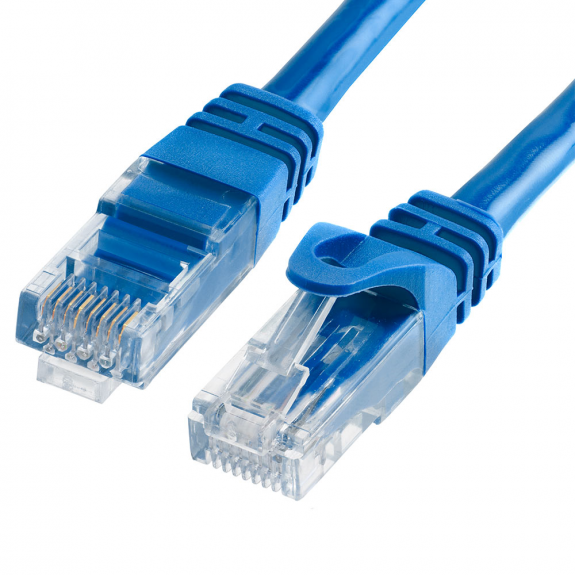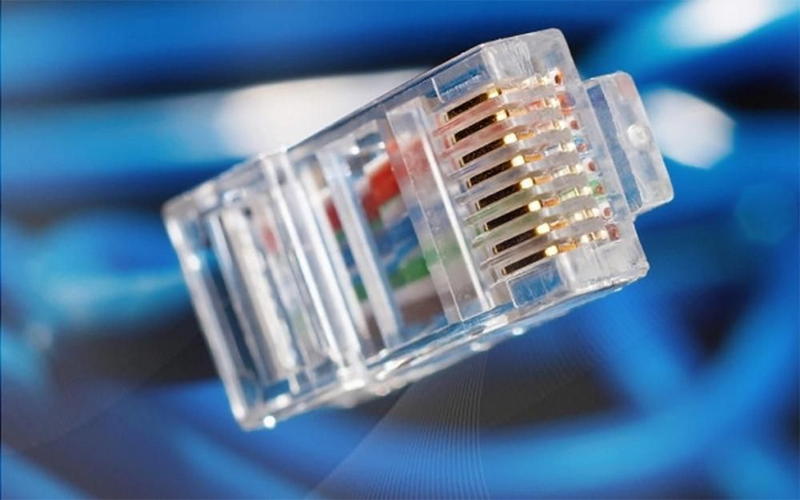In today's digital age, the choice of network cables is crucial for businesses aiming to maintain efficient and reliable connectivity. With various options available, including CAT5e, CAT6, and CAT6a cables, understanding the differences and benefits of each type can help you make an informed decision. This article will explore these three types of Ethernet cables, their specifications, advantages, and ideal use cases, ensuring that your business is equipped with the best network infrastructure.
Understanding Ethernet Cables
Ethernet cables are the backbone of any wired network, facilitating data transfer between devices. They connect computers, routers, switches, and other network devices, allowing for seamless communication and data exchange. The performance of these cables is determined by several factors, including their category, which indicates the cable's specifications and capabilities. The most common types used in business environments are CAT5e, CAT6, and CAT6a. Each category has unique characteristics that cater to different networking needs, making it essential to choose the right one for your specific requirements.
What is CAT5e?
Category 5 Enhanced (CAT5e) is an improvement over the original CAT5 standard. It supports data rates of up to 1 Gbps (Gigabit per second) and frequencies of up to 100 MHz. CAT5e cables are suitable for most small to medium-sized businesses that require basic networking capabilities. They are designed to reduce crosstalk and improve signal quality, making them a reliable choice for everyday networking tasks.

Advantages of CAT5e:
- Cost-Effective: Generally, CAT5e cables are the most affordable option, making them ideal for budget-conscious businesses. Their lower price point allows companies to invest in other critical areas while still maintaining a functional network.
- Sufficient for Basic Needs: They are adequate for standard internet browsing, email, and light data transfer tasks. For businesses that do not rely heavily on data-intensive applications, CAT5e provides a practical solution without unnecessary expenses.
- Easy Installation: CAT5e cables are widely available and easy to install, making them a popular choice for small networks. Their flexibility and compatibility with existing infrastructure simplify the setup process, allowing businesses to get up and running quickly.
Limitations of CAT5e:
- Limited Speed and Bandwidth: While sufficient for basic tasks, CAT5e may struggle with high-demand applications such as video conferencing or large file transfers. As businesses grow and their data needs increase, CAT5e may become a bottleneck, hindering productivity.
- Shorter Distance: The maximum length for a CAT5e cable run is 100 meters, beyond which signal degradation can occur. This limitation can be problematic for larger office spaces or buildings where longer cable runs are necessary.
What is CAT6?
Category 6 (CAT6) cables offer enhanced performance compared to CAT5e. They support data rates of up to 10 Gbps and frequencies of up to 250 MHz. This makes CAT6 a better choice for businesses that require higher speeds and more bandwidth. CAT6 cables are designed with stricter specifications for crosstalk and system noise, resulting in improved performance in high-traffic environments.
Advantages of CAT6:
- Higher Data Rates: CAT6 cables can handle up to 10 Gbps over short distances (up to 55 meters), making them suitable for high-demand applications. This capability is particularly beneficial for businesses that rely on fast data transfer for tasks such as video streaming, online gaming, or large-scale data analysis.
- Reduced Crosstalk: The design of CAT6 cables minimizes interference and crosstalk, ensuring a more stable connection. This feature is crucial in environments with multiple devices competing for bandwidth, as it helps maintain consistent performance.
- Future-Proofing: Investing in CAT6 cables can help businesses prepare for future networking needs as data demands increase. As technology evolves and applications become more data-intensive, having a robust infrastructure in place can save time and money in the long run.
Limitations of CAT6:
- Cost: CAT6 cables are more expensive than CAT5e, which may be a consideration for smaller businesses. While the initial investment is higher, the long-term benefits often outweigh the costs, especially for companies anticipating growth.
- Installation Complexity: While not overly complicated, installing CAT6 may require more careful handling due to its thicker gauge. This can lead to increased installation time and costs, particularly if professional assistance is needed.
What is CAT6a?
Category 6 Augmented (CAT6a) is an advanced version of CAT6, designed to support even higher data rates and frequencies. CAT6a cables can handle data rates of up to 10 Gbps over longer distances (up to 100 meters) and frequencies of up to 500 MHz. This makes them ideal for data centers and environments where high-speed connectivity is critical.
Advantages of CAT6a:
- Superior Performance: CAT6a cables provide the best performance among the three types, making them ideal for data centers and high-demand environments. Their ability to maintain high speeds over longer distances ensures that businesses can operate efficiently without interruptions.
- Longer Distance at High Speeds: They maintain 10 Gbps speeds over longer distances, which is crucial for larger networks. This capability allows businesses to expand their operations without worrying about signal loss or degradation.
- Enhanced Shielding: CAT6a cables often come with better shielding, reducing interference and improving overall network reliability. This feature is particularly important in environments with a high density of electronic devices, where interference can significantly impact performance.
Limitations of CAT6a:
- Higher Cost: The advanced technology and materials used in CAT6a cables make them the most expensive option. Businesses must weigh the benefits against the costs to determine if this investment aligns with their networking needs.
- Bulkier Design: CAT6a cables are thicker and less flexible, which can complicate installation in tight spaces. This bulkiness may require additional planning and resources during installation, particularly in older buildings with limited infrastructure.
Choosing the Right Cable for Your Business
When selecting the appropriate network cable for your business, consider the following factors:
1. Business Size and Growth Potential
- Small Businesses: If your business is small and primarily uses the internet for basic tasks, CAT5e may suffice. This option allows for cost savings while still providing adequate performance for everyday operations.
- Medium to Large Businesses: For businesses that anticipate growth or require more robust networking capabilities, CAT6 or CAT6a is advisable. These cables can accommodate increased data demands and support future expansion.
2. Network Demands
- Basic Usage: For simple tasks like browsing and emailing, CAT5e is adequate. However, as businesses evolve and their needs change, they may find that upgrading to a higher category cable is necessary.
- High-Demand Applications: If your business relies on video conferencing, cloud applications, or large file transfers, opt for CAT6 or CAT6a. These cables provide the speed and reliability needed for seamless operation in a competitive environment.
3. Budget Considerations
- Cost-Effective Solutions: If budget constraints are a concern, CAT5e offers a good balance of performance and cost. This option allows businesses to maintain functionality without overspending on unnecessary features.
- Long-Term Investment: Investing in CAT6 or CAT6a may be more cost-effective in the long run, as they can handle future demands without needing replacement. This foresight can save businesses money and time as they grow.
4. Installation Environment
- Indoor vs. Outdoor: Consider the environment where the cables will be installed. CAT6a cables are often better suited for commercial spaces due to their durability and shielding. Additionally, businesses should assess whether they need cables that can withstand outdoor conditions or if indoor cables will suffice.

Conclusion
In conclusion, the choice between CAT5e, CAT6, and CAT6a cables depends on your business's specific needs, budget, and future growth potential. While CAT5e is a cost-effective solution for basic networking, CAT6 and CAT6a offer enhanced performance for businesses with higher demands. As a network cable manufacturer, understanding these differences can help you make an informed decision that supports your business's connectivity needs. By investing in the right network infrastructure, you can ensure that your business remains competitive and efficient in an increasingly digital world.
Frequently Asked Questions
1. What is the main difference between CAT5e, CAT6, and CAT6a?
The main differences lie in their data rates, bandwidth, and shielding. CAT5e supports up to 1 Gbps, CAT6 up to 10 Gbps (short distances), and CAT6a maintains 10 Gbps over longer distances with better shielding. This makes each category suitable for different networking needs, from basic to high-performance applications.
2. Which cable is best for video conferencing?
CAT6 or CAT6a is recommended for video conferencing due to their higher data rates and reduced interference, ensuring a stable connection. These cables can handle the bandwidth required for high-quality video and audio transmission, making them ideal for remote meetings and collaboration.
3. Can I use CAT5e for a business network?
Yes, CAT5e can be used for small business networks that do not require high-speed data transfer. However, it may not be suitable for future growth or high-demand applications. As businesses expand and their data needs increase, upgrading to a higher category cable may become necessary.
4. How long can I run a CAT6 cable?
The maximum length for a CAT6 cable run is 100 meters (328 feet) for optimal performance. Beyond this distance, signal degradation may occur, leading to slower speeds and potential connectivity issues. Businesses should plan their network layout accordingly to avoid exceeding this limit.
5. Is it worth investing in CAT6a cables?
If your business requires high-speed data transfer and plans for future growth, investing in CAT6a cables can provide long-term benefits and reliability. These cables are designed to handle increased data demands, ensuring that your network remains efficient and effective as your business evolves.





